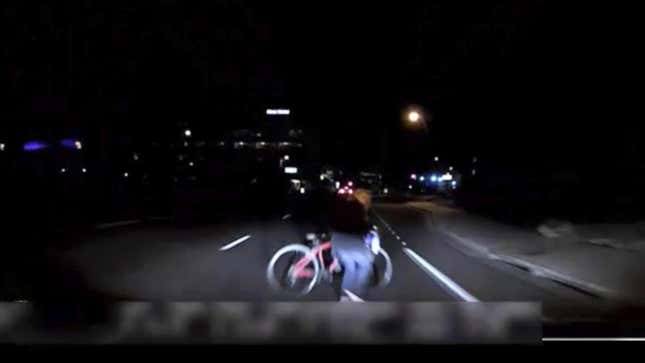
The human driver meant to act as a fail-safe for an autonomous Uber car that struck and killed a Tempe, Arizona woman has been charged with negligent homicide by local authorities, the Associated Press reports. The 2018 crash was the first recorded case of a pedestrian being killed by a self-driving car.
Phoenix officials formally charged Rafaela Vasquez with the negligent homicide of Elaine Herzberg, the 49-year old Tempe resident who killed while walking her bike across Mill Avenue. The car in question—which was traveling within the speed limit of 45 mph at the time of the crash—was operating in autonomous mode with Vasquez acting as a safety operator while Uber trialed the new technology within Tempe. No additional passengers were on board.
Investigators found the self-driving AI contained a handful of “safety and design lapses,” including the inability to react appropriately to jaywalkers. As a result, Uber’s software didn’t initiate braking until it was too late for the car to avoid a collision. These were the exact sort of extenuating circumstances that safety operators like Vazquez were intended to mitigate.
In the moments before the crash, interior dashcam footage indicated Vasquez repeatedly turning her eyes away from the road and towards her lap. While Vasquez initially denied tooling around with any electronic devices while behind the wheel, data that Hulu provided to police showed that Vasquez was streaming episodes of “The Voice” minutes before the crash. According to Hulu’s records, she stopped streaming just one minute before the autonomous vehicle slammed into Herzberg.
She’s pleaded not guilty to the homicide charges, according to the AP.
While it managed to avoid criminal liability, some of the blame here belongs to Uber as well. As The Information outlined at the time, Uber manager Robbie Miller spent the days before the crash attempting to warn other senior executives that the company’s self-driving vehicles were “routinely in accidents resulting in damage,” and that some of the drivers that were hired appeared to not have been properly vetted or trained.
Meanwhile, federal investigators with the U.S. National Transportation Safety Board (NTSB) found that the Uber team responsible for the Tempe-based test program failed to uphold some of the basic safeguards that were required of them, like onboarding a dedicated safety staff. Uber’s self-driving vehicles were implicated in two prior crashes by the NTSB for failing to accurately identify a given hazard. At the time, Uber’s self-driving fleet had been involved in 37 crashes since the program first began in the fall of 2016.
In spite of these accidents, Bloomberg found that Uber decided five months before to cut back the number of human drivers safeguarding these vehicle tests from two-per-car to just one when one of its cars ended the life of Elaine Herzberg. Contemporaneous with the resulting trial, Uber fired 100 of its self-driving vehicle safety operators, replacing them 55 with so-called “mission specialists,” and completely revamping its safety protocols to the originally mandated two safety drivers per vehicle.
Uber has since settled with Herzberg’s family for an undisclosed sum
Currently, Uber operates autonomous vehicles in Pittsburgh, San Fransisco, Toronto, Washington, DC, and Dallas. It’s unclear if visibility played a role in Uber’s AI failing to react to a pedestrian at approximately 10pm local time.